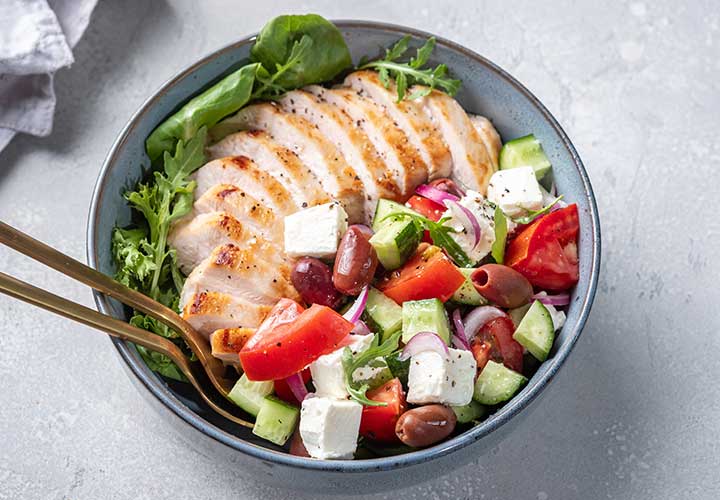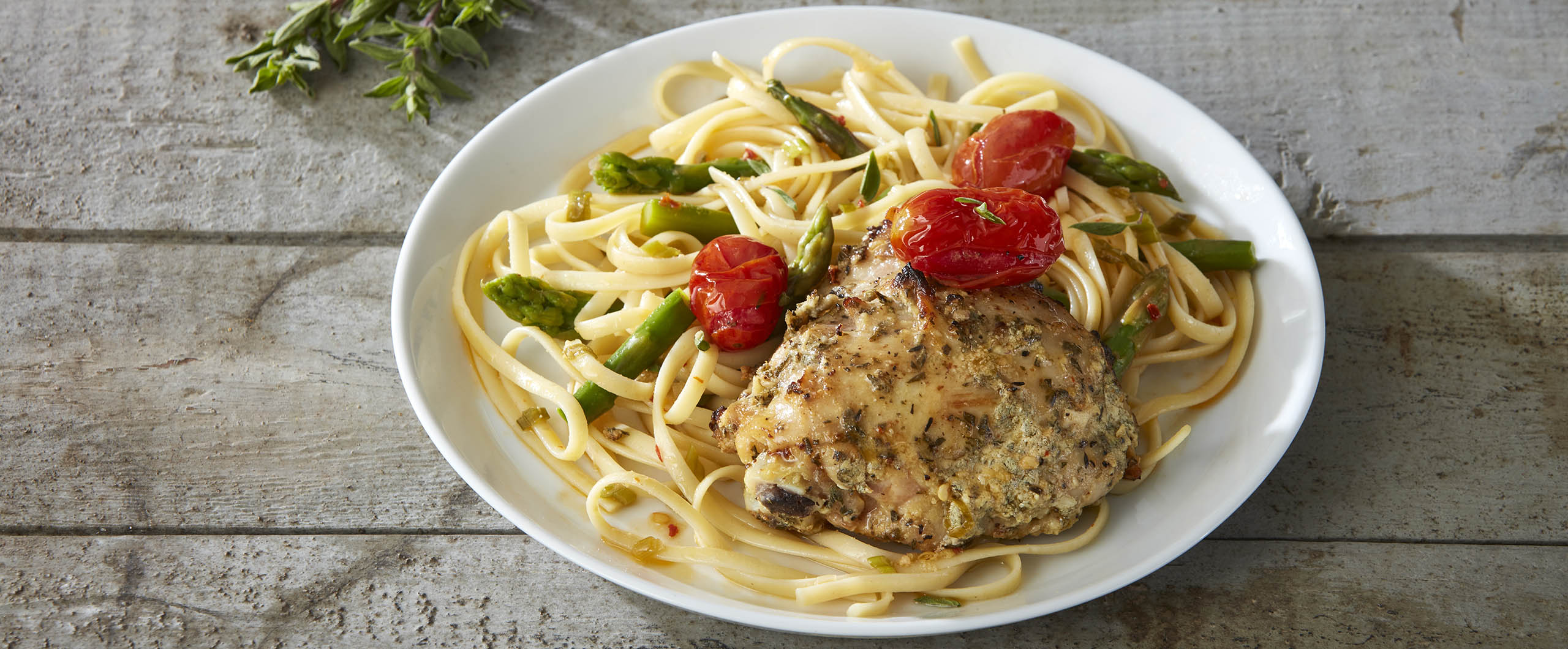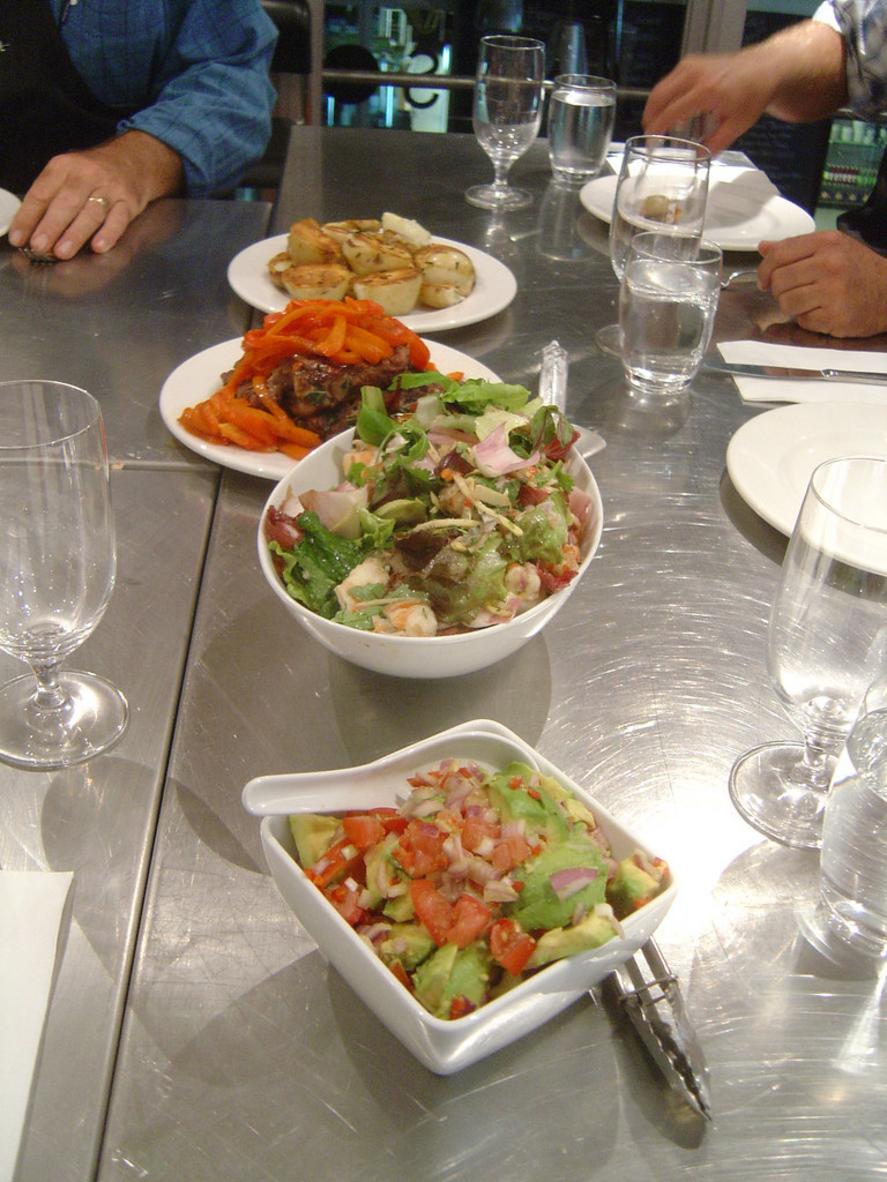The Inspiration Behind the Dish
It all started with a single, unforgettable meal – a dinner at a charming restaurant nestled in the heart of Jackson Hole, Wyoming. I was traveling with my husband, seeking a moment of respite from the relentless demands of daily life, and stumbling upon this gem was pure serendipity. The aroma alone, a complex tapestry woven from the bright zest of lemon, the earthy fragrance of fresh herbs, and the subtle richness of olive oil, instantly transported me to a state of blissful serenity. The chef, a wonderfully warm and passionate individual named Marco, had expertly combined the flavors of the Mediterranean – a celebration of sun-drenched olives, juicy tomatoes, fragrant rosemary, and the peppery bite of oregano – creating a dish that was both intensely flavorful and remarkably refreshing. It was a chicken dish, yes, but it was so much more than just a chicken dish. It was an experience, a memory etched into my soul. Marco explained that his philosophy was simple: to let the quality of the ingredients speak for themselves, to honor the bounty of the earth, and to present each dish with a genuine expression of love and care. He used locally sourced chicken, of course, but the real magic lay in the meticulous layering of flavors – a generous drizzle of high-quality olive oil, a squeeze of fresh lemon juice, a handful of freshly chopped herbs, and a pinch of sea salt to bring it all together. I found myself completely captivated, not just by the taste, but by the story behind it. It wasn’t just about the food; it was about the passion, the dedication, and the genuine joy that Marco poured into every bite. I returned home determined to recreate this experience, to bottle up that moment of pure bliss and share it with my family. That’s how this recipe, now a beloved staple in our household, was born – a tribute to a remarkable meal and a reminder that even the simplest dishes can be transformed into something extraordinary with a little love and attention. The entire experience underscored the idea that food, at its best, is a conduit for connection—connection to a place, to a culture, and to the people who create it. I wanted to capture that essence, to translate the joy of that Jackson Hole evening into a recipe that would bring a little bit of that sunshine and soul into our own kitchen. delicious recipes further helped me refine the dish’s flavor profile, emphasizing the importance of balancing acidity with savory elements—a principle that Marco had implicitly demonstrated. It’s a reminder that travel doesn’t just mean visiting new places; it’s about opening yourself up to new experiences and letting them shape your perspective – even, and perhaps especially, when it comes to food. travel experiences truly influenced my approach to creating this recipe. jackson hole restaurants offered valuable insights into the local culinary scene, and I drew inspiration from the regional ingredients and cooking techniques. fine dining was a key factor in elevating the overall taste profile. This isn’t just a recipe; it’s a story, a memory, a celebration of the simple joys in life. food memories highlight the powerful connection between food and our emotions, and this dish embodies that connection perfectly. Mediterranean cuisine is a perfect reflection of the flavors that inspired this creation.
Ingredients You’ll Need
Let’s gather the wonderful components that will transform this simple chicken into a flavor explosion! This isn’t just a recipe; it’s a celebration of fresh herbs and bright Mediterranean tastes. The quality of your ingredients truly matters here, so seek out the best you can find. We’re aiming for a vibrant, herbaceous, and deeply satisfying meal. Here’s everything you’ll need to create this family favorite:
- Chicken Pieces: Approximately 4-6 bone-in, skin-on chicken pieces – thighs and drumsticks work particularly well, lending themselves to a richer flavor and staying juicy during cooking. Chicken Thighs are often a preferred choice, especially when you want maximum flavor.
- Olive Oil: Extra virgin olive oil is absolutely essential. It provides not just lubrication but also adds a fantastic fruity flavor. Olive Oil Benefits – choosing a good quality one makes a huge difference.
- Lemon: One large lemon – the juice and zest are both crucial. The zest provides a concentrated burst of citrus aroma, while the juice adds a tangy brightness. Lemon Zest Recipes.
- Garlic: 4-6 cloves, peeled and minced. Garlic is a flavor powerhouse, and using fresh cloves ensures the most potent aroma and taste. Garlic Varieties.
- Fresh Herbs – The Heart of the Dish: This is where the magic happens! We’ll use a generous amount of fresh herbs. Aim for:
- 2 tablespoons chopped fresh oregano – Oregano Uses.
- 2 tablespoons chopped fresh rosemary – Rosemary Recipes.
- 1 tablespoon chopped fresh thyme – Thyme Benefits.
- 1/2 teaspoon chopped fresh sage – Sage Recipes.
- Salt and Black Pepper: To taste – use freshly ground black pepper for the best flavor. Salt Alternatives.
- Chicken Broth (Optional): 1/2 cup – Adding chicken broth elevates the flavor and helps keep the chicken moist. Homemade Chicken Broth.
- Red Wine (Optional): 1/4 cup – A dry red wine, like Pinot Noir, adds depth and complexity to the sauce. Red Wine Pairings.
Don’t be afraid to experiment with other herbs too – basil, parsley, or even a pinch of dried marjoram would be delicious additions! The key is to build a vibrant, aromatic flavor profile. Remember to source your ingredients with care and enjoy the process of creating this wonderfully flavorful meal.
Step-by-Step Instructions
Let’s walk through creating this incredibly flavorful Mediterranean Herb Chicken, a recipe that’s become a cherished family favorite. It’s surprisingly simple to make, and the result is a juicy, aromatic chicken bursting with bright herbs and the delicious tang of Mediterranean flavors. Preparing this dish is about layering tastes, starting with a perfectly seasoned chicken and culminating in a pan sauce that’s truly exceptional. Follow these steps, and you’ll be enjoying a restaurant-quality meal in no time.
1. Prepare the Chicken: Begin by patting the chicken pieces – typically bone-in, skin-on thighs and drumsticks – dry with paper towels. This is crucial for getting beautifully browned skin. Season generously on all sides with salt and freshly ground black pepper. Don’t be shy; the chicken needs a good foundation of flavor. A pinch of paprika also adds a lovely color and subtle smokiness.
2. Sear the Chicken: In a large, heavy-bottomed skillet or Dutch oven, heat about 2 tablespoons of olive oil over medium-high heat. Once the oil shimmers, carefully add the chicken pieces, ensuring not to overcrowd the pan. Sear the chicken for 3-4 minutes per side, until a nice golden-brown crust forms. This searing step is essential for developing rich, concentrated flavor. It’s tempting to move the chicken around too much, but resist! Let it sit undisturbed to ensure even browning.
3. Build the Flavor Base: Remove the chicken pieces from the skillet and set them aside. Don’t wipe out the pan completely! This is where the magic happens. Add 1 medium chopped onion and 2 cloves of minced garlic to the skillet. Sauté for about 3-4 minutes, stirring frequently, until the onion is softened and translucent. For an extra layer of flavor, you can add a sprig of fresh rosemary or thyme during this stage, infusing the oil with its fragrance.
4. Deglaze and Add Liquids: Pour in 1/2 cup of dry white wine – a crisp Sauvignon Blanc or Pinot Grigio works beautifully – and increase the heat slightly. Use a wooden spoon to scrape up any browned bits from the bottom of the pan (this is called deglazing, and it’s where so much flavor resides!). Let the wine reduce by about half, roughly 2-3 minutes. This concentrates the flavors and creates a fantastic base for the sauce. Now, add 1 (14.5 ounce) can of diced tomatoes (undrained) and 1 cup of chicken broth. Bring the liquid to a simmer.
5. Return the Chicken and Simmer: Return the chicken pieces to the skillet, nestling them into the sauce. Bring the sauce back to a gentle simmer, cover the skillet with a lid, and reduce the heat to low. Let the chicken simmer for 20-25 minutes, or until it’s cooked through and the internal temperature reaches 165°F (74°C) as measured with a meat thermometer. Check the temperature here.
6. Finish the Sauce: Once the chicken is cooked through, remove it from the skillet and set it aside to rest for 10 minutes before slicing. To thicken the sauce, you can either: a) whisk in 1-2 tablespoons of cornstarch mixed with 2 tablespoons of cold water (creating a slurry) and simmer for 1-2 minutes, or b) remove the chicken pieces from the pan and simmer the sauce, undisturbed, for 5-10 minutes until it reduces and thickens naturally. Learn more about thickening sauces.
7. Serve and Enjoy: Slice the chicken and serve it over your favorite grain like rice or couscous, or alongside roasted vegetables. Garnish with fresh herbs, such as parsley or oregano, for a vibrant finish. This chicken is absolutely fantastic served with a crusty baguette for soaking up every last drop of the flavorful sauce. Find serving suggestions here.
Tips for the Best Flavor
To truly unlock the incredible, vibrant flavors of this Mediterranean Herb Chicken, a few key techniques can elevate it from delicious to unforgettable. It’s not just about throwing ingredients together; it’s about understanding how they interact and build upon each other. First, marinating is essential. Allowing the chicken to sit in a mixture of olive oil – extra virgin, of course, for the richest flavor – lemon juice, garlic, and those generous heaps of fresh herbs (oregano, thyme, rosemary, parsley – don’t be shy!), for at least 30 minutes, and preferably up to 4 hours in the refrigerator, allows the seasonings to penetrate deep into the meat, tenderizing it and intensifying their aroma. Think of it like a little spa day for your chicken! Flavor Infusion
Next, searing the chicken properly is paramount. Don’t overcrowd the pan, as this will lower the temperature and steam the chicken instead of developing a beautiful, golden-brown crust. Pat the chicken dry with paper towels – moisture is the enemy of a good sear. Use a heavy-bottomed skillet – cast iron is ideal – and heat it over medium-high heat. Add a little olive oil and wait for the oil to shimmer before adding the chicken. Let it sear undisturbed for 5-7 minutes per side, until a nice crust forms. Searing Techniques Perfect Sear Don’t move it! Resist the urge to flip it repeatedly – you’re building a flavor layer.
Once the chicken is seared, reduce the heat to medium and continue cooking until it’s cooked through. Using a meat thermometer is the best way to ensure it’s perfectly done – 165°F (74°C) in the thickest part of the thigh is the target. However, don’t overcook it, as this will dry it out. A little bit of pink in the center is perfectly okay, especially with dark meat.
Finally, a crucial detail often overlooked is adding a splash of white wine to the pan after searing the chicken. Deglazing the Pan Allow the alcohol to cook off for a minute or two, scraping up all those browned bits from the bottom of the pan – these are packed with concentrated flavor. Then, stir in a knob of butter for richness and a squeeze of lemon juice for brightness. Lemon Butter Sauce Season with salt and pepper to taste. Adding a touch of smoked paprika adds an extra layer of depth. Smoked Paprika Don’t be afraid to experiment! This recipe is a wonderful base; feel free to incorporate other herbs and spices you enjoy. A pinch of chili flakes adds a subtle kick, while fresh dill would be fantastic. The key is to build layers of flavor, starting with the marinade, continuing with the sear, and finishing with a vibrant, herby sauce. Remember, cooking is an art as much as it is a science – embrace the process and enjoy creating something truly delicious. Flavor Combinations “The secret ingredient is always love,” as my grandmother used to say.
Serving Suggestions & Variations
This Mediterranean Herb Chicken is truly versatile, and while it’s a family favorite in its original form, there’s so much room to customize it and tailor it to your tastes. Let’s start with the most obvious: serving it with classic Mediterranean sides. A generous helping of fluffy couscous, infused with lemon and herbs, is a perfect accompaniment. Grain dishes offer a delightful textural contrast to the tender chicken. Alternatively, roasted potatoes, seasoned with oregano and garlic, are a consistently crowd-pleaser. Roasted Potatoes Recipe are a particularly excellent choice. For a lighter option, consider a vibrant Greek salad – the cool, refreshing crispness of cucumber, tomatoes, and feta cheese balances the richness of the chicken beautifully. Greek Salad Recipe
Beyond the traditional, you can easily elevate this dish with different sauces or dips. A dollop of tzatziki sauce, made with Greek yogurt, cucumber, and dill, adds a tangy coolness. Tzatziki Recipe Harissa paste, with its smoky, spicy flavor, can be stirred into the chicken while cooking, creating a truly fiery dish. Harissa Paste Recipe For a creamier option, consider a lemon-herb pan sauce – simply deglaze the pan with white wine after cooking the chicken, add lemon juice, butter, and fresh herbs like thyme and rosemary. This adds incredible depth of flavor. Lemon Herb Pan Sauce Recipe
Don’t be afraid to experiment with different vegetables too! Adding zucchini, bell peppers, or cherry tomatoes to the pan while cooking the chicken will infuse them with wonderful flavor. Vegetable Recipes You could even incorporate some artichoke hearts for a more sophisticated twist. And if you are looking for an entirely different experience, this chicken would also be fantastic served over a bed of rice, perhaps basmati rice with a touch of saffron for a beautiful color and delicate flavor. Saffron Rice Recipe Finally, you can use this as a fantastic filling for pita bread, creating delicious wraps or sandwiches. Pita Bread Recipes The possibilities are truly endless! This recipe is a wonderful base, a foundation for creating countless memorable meals. The key is to adapt it to your individual preferences and enjoy the process.
A Little Bit of Soul: Reflections on Gratitude & Joy
In the bustle of daily life, it’s so easy to get caught up in the ‘doing,’ forgetting to simply be. This recipe, this delicious Mediterranean Herb Chicken, isn’t just about the incredible flavors dancing on your tongue; it’s about a reminder to cultivate gratitude and find joy in the small, everyday moments. It’s about the warmth of sharing a meal with loved ones, a quiet evening of reflection, or even just the satisfaction of nourishing yourself with something lovingly prepared. Gratitude is a powerful force, and this dish feels like a delicious embodiment of it. It’s a reminder that abundance exists – not just in the ingredients themselves, but in the relationships we nurture and the experiences we embrace. Joy is a precious gift, and savoring this chicken, rich with herbs and sunshine, is a deliberate act of acknowledging and appreciating that gift. The simple act of cooking, of transforming ingredients into something beautiful and nourishing, is a form of meditation, a quiet connection to the present. Perhaps the scent of lemon and oregano, reminiscent of summers spent in Greece Greece, evokes cherished memories and a feeling of peace. Finding Joy isn’t about grand gestures; it’s about noticing the beauty around us, the warmth of human connection, and the quiet contentment of a full belly and a grateful heart. It’s about acknowledging that even in challenging times, there is always something to be thankful for, something to savor, something to move forward with hope and optimism. Let this chicken be a symbol of that – a reminder to seek out the simple pleasures, to express gratitude, and to fill your life with joy. Appreciation is the cornerstone, and this dish, I hope, is a little taste of that sweetness. Ultimately, it’s about realizing that the most valuable ingredients in life aren’t found in a recipe book, but within our hearts. Wellness and mental well-being are linked directly to cultivating gratitude and appreciating what we have.
 ,
, ,
, ,
, ,
,
